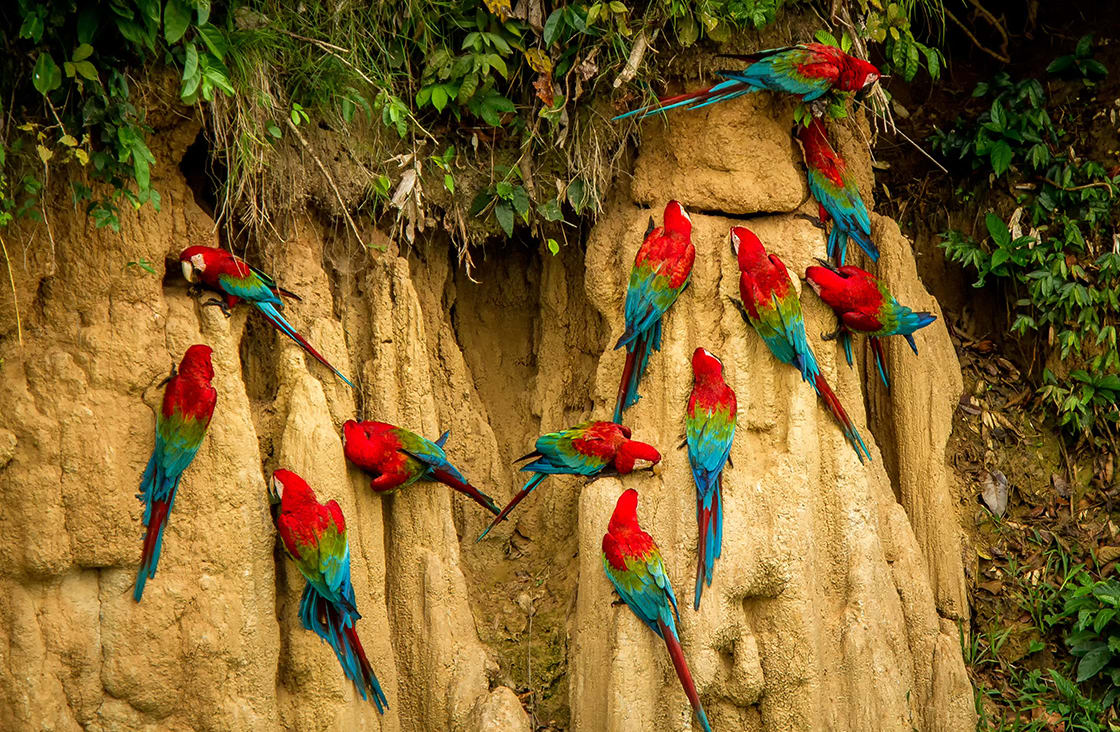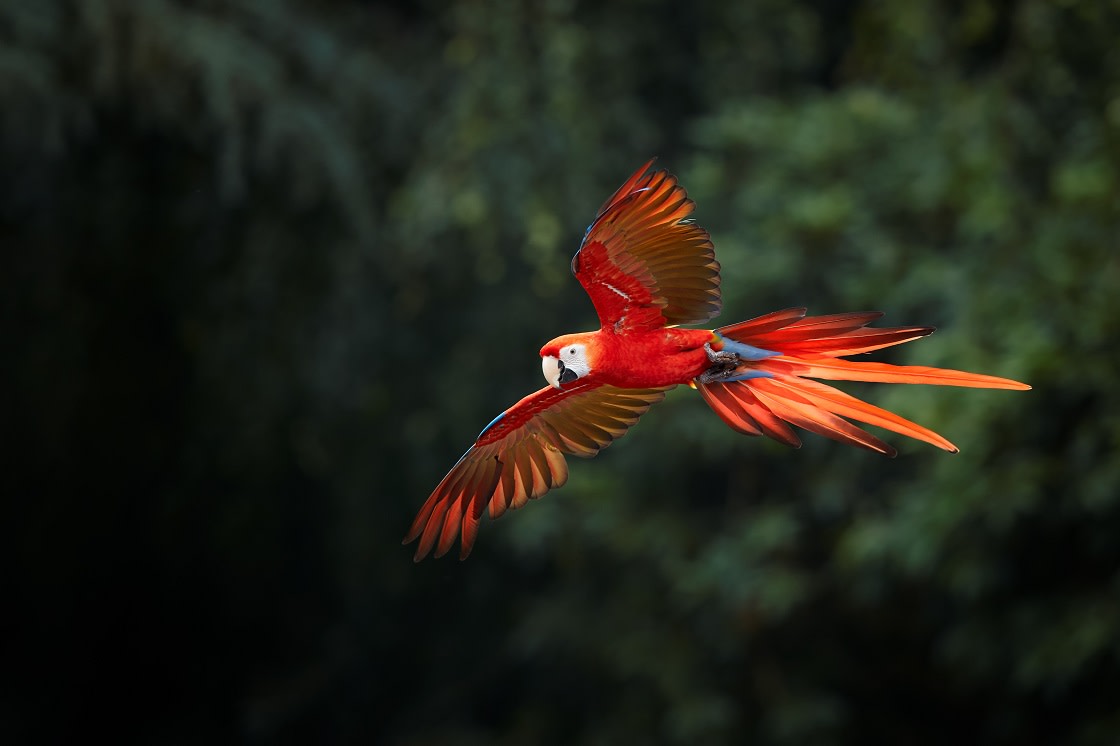
You may or may not have heard of the famous clay licks of the Amazon rainforest: exotic parrots like macaws gather here daily to eat the clay, creating the perfect destination for travelers to observe the dozens (sometimes hundreds) of individual birds that flock here. But what is a clay lick exactly and why do parrots (and indeed other animals) eat clay? What attracts them to these clay licks in the first place? For a bit of insight into this bizarre phenomenon, here are the main hypotheses.
Clay licks (or collpas as they are known in the Amazon) are zones of clay deposits in the rainforest where animals and birds congregate to consume the clay by licking at it. Avian clay licks are often found on the outer bends of meandering rivers where erosion of the riverbank has exposed clay seams in the soil.

Ara Macao or Scarlet Macaw Big Red Colored Amazonian Parrot
The scientific term for the behavior of animals that eat clay or chalk is geophagy, which researchers have begun to study more thoroughly. Though no concrete answer as to why macaws eat clay has been agreed upon, there are several hypotheses that are highly plausible.
One of the most accepted suggestions for animals eating clay is that they lack certain vitamins and minerals in their diets. This may include salt and magnesium, often found in clay, which are essential for the healthy operation of the nervous system, and vital muscles such as the heart.
Another well-received hypothesis for why animals eat clay is attributed to the benefits of its high pH number in balancing out the effects of acidity in the rainforest. Acidic fungi impact much of the fruit found in the Amazon rainforest, which then impacts the animals who eat it. The effects? Decreased milk and egg production, liver damage, and a weakened immune system. By eating the clay, macaws are able to balance out this dangerous acidity and protect themselves from these health problems.
Realistically, it is highly believable that both of these hypotheses are the reasons parrots lick clay. They are not mutually exclusive, and wild animals in environments such as the Amazon are remarkable for the natural instincts that help them adapt like this. What we do know is that eating this clay offers microbiological benefits, such as protecting the animal’s stomachs against toxins, parasites, and pathogens. Perhaps this detoxification process is what leads animals to consume clay after consuming other items.
Clay licks can be found throughout the Amazon Rainforest, but visible and accessible ones are best visited on Amazon tours of Peru and Ecuador. Here is a list of the most famous Amazon clay licks:

Red and Green Macaw Ara Group Eating Clay Cliff At Manu National Park, Peru
The Blanquillo Clay Lick in Manu National Park is a popular spot to witness this unusual animal behavior. Rainforest parrots congregate at this one bend along the Manu River, feeding on only one specific layer of soil that runs for hundreds of meters horizontally along the bend.
Tambopata has the highest concentration of avian clay licks in the world, including the world’s largest clay lick: the Chuncho Macaw Clay Lick. A true sight (and sound) to behold, here more than 20 different tropical bird species perch, preen and peck at a cliff of clay, from tiny parakeets to Mealy parrots and huge (and noisy) Red and Green Macaws. To see this spectacle for yourself, book a stay at the Tambopata Research Center lodge, which is just 500 yards away from it.
The Anangu Community territory within the Yasuni National Park is home to over a dozen clay licks. Two of the most accessible and spectacular ones can be found along the Giant Otter Creek. Many of the 20 species of parrots, macaws, and parakeets found in the Ecuadorian Amazon can be seen here and in the best weather conditions sometimes 800 individual birds can be seen! The clay licks in Yasuni can be visited on Amazon river cruises in Ecuador and jungle lodge stays at either Sacha Lodge (on the shores of Lake Pilchicocha in the private Sacha Reserve), Napo Wildlife Center (up a tributary of the Napo River on Anangucocha Lake), or La Selva Lodge (on the Garzaocha Lagoon).
Whether you are a keen birdwatcher or just appreciate nature, the chance to visit the clay licks of the Amazon with a knowledgeable naturalist is one not to be passed up, one of the most stunning wildlife spectacles in the world that can’t be missed.
While Rainforest Cruises aim to provide accurate and up-to-date information, we make no representations as to the accuracy or completeness of any information herein or found by following any link on this site. Rainforest Cruises cannot and will not accept responsibility for any omissions or inaccuracies, or for any consequences arising therefrom, including any losses, injuries, or damages resulting from the display or use of this information.




